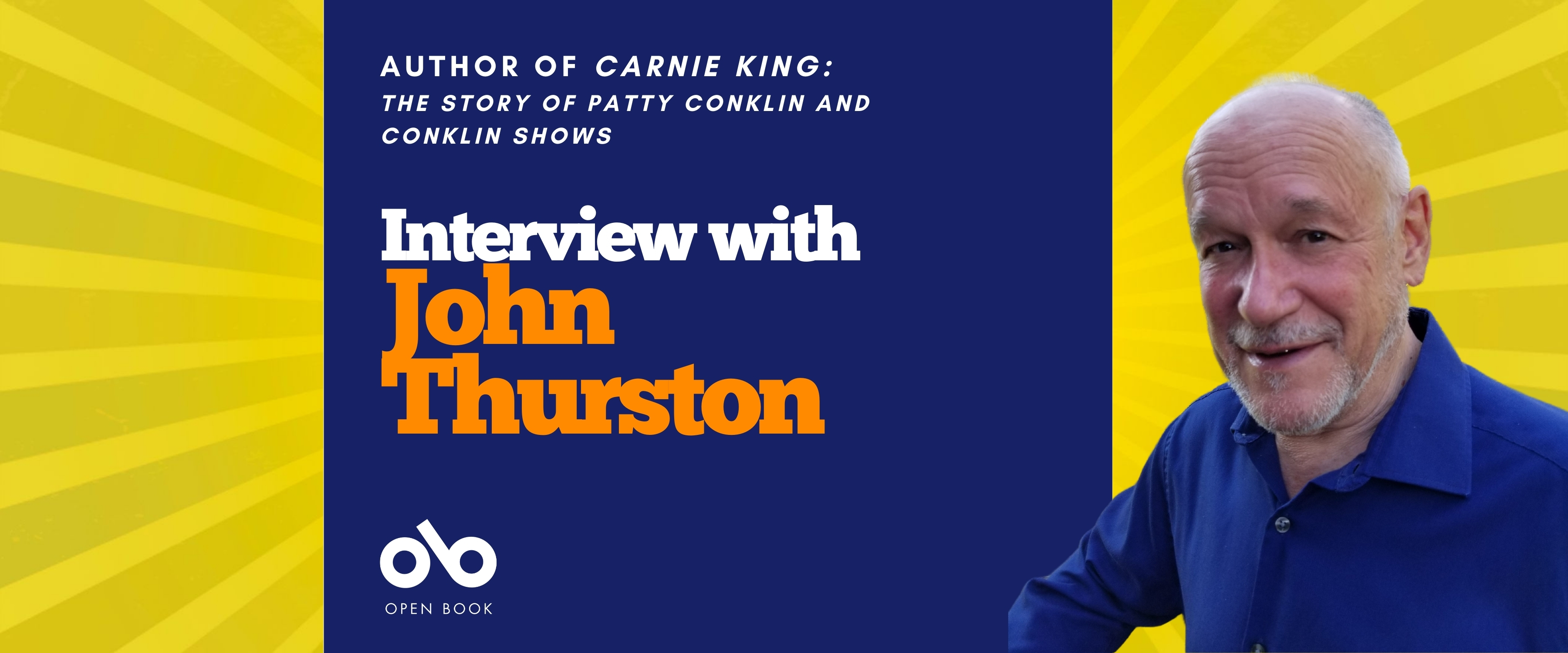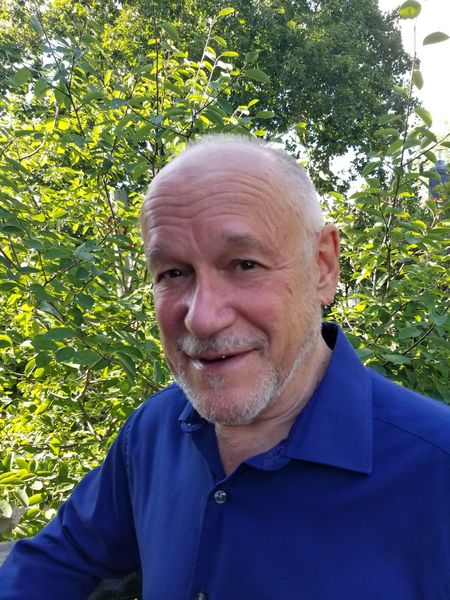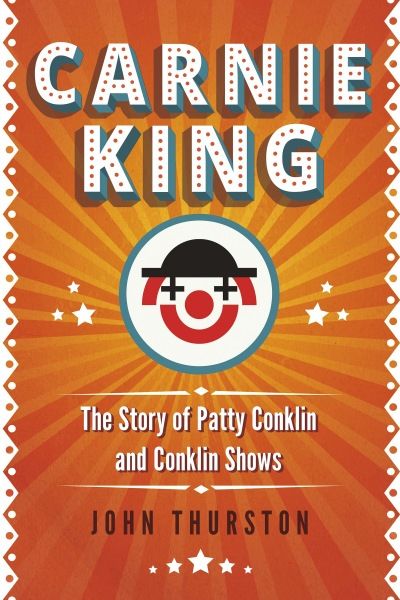John Thurston Takes Us Under the Big Top in Carnie King: The Story of Patty Conklin and Conklin Shows
While some authors research unique jobs and callings for their work, there are those that have lived-in experience that can bring the reader into a world that the author knows intimately. In these books, we often find ourselves immersed in ways that we could never have expected without such a guide.
Such in the case for John Thurston, an Ottawa-based author whose experiences working as a "Carnie" gave him specific insights into the history of carnivals and how some of the largest operations in the world have been created and run. His new book of non-fiction, Carnie King (Dundurn Press), is an exploration of the true story behind one of these legendary companies, and its flamboyant and resourceful founder, Patty Conklin.
Take a journey through the growth of Conklin Shows, and learn how these carnivals evolved from small-time operations to massive exhibitions, including the CNE. Thurston not only shares the true history of one of the greatest showmen and spectacles of the twentieth-century, but also speaks with dozens of carnies who worked these spectacles, providing profound and enthralling observations of life on the midway.
We have a fantastic True Story Nonfiction Interview with the author right here on Open Book, so grab your popcorn and settle in for the show.
Open Book:
Tell us about your new book and how it came to be. What made you passionate about the subject matter you're exploring?
John Thurston:
My book is about Patty Conklin, Conklin Shows and the place of carnivals and midways in North American culture. I first worked on the midway at the Canadian National Exhibition in Toronto as a young teenager. Working as a carnie helped pay my tuition for my undergraduate studies. I went on to complete my PhD. My doctoral thesis became a book on Susanna Moodie, a nineteenth-century Canadian writer. I enjoyed the experience of writing about Moodie and publishing a book on her so much that I looked around for another subject to take on.
OB:
Patty Conklin came to mind as another Canadian icon whose life and accomplishments needed to be explored and shared with a wider audience. Patty was a vibrant and well-known figure within the carnival industry but remains largely unknown to the general public. I was curious about how he came by his success and his colourful reputation, what his background was and how he operated. It was clear that his story is one that people would be interested to know more about.
JT:
Patty Conklin and Conklin Shows have an important place in Canadian cultural history. The Canadian National Exhibition became Patty’s personal world’s fair and the biggest annual exhibition in the world. His son and grandson made the show he founded into the largest carnival company in the world, and their story also needs to be told.
OB:
What was your research process like for this book? Did you encounter anything unexpected while you were researching?
Your CanLit News
Subscribe to Open Book’s newsletter to get local book events, literary content, writing tips, and more in your inbox
JT:
My research was as broad and comprehensive as I could make it. I interviewed scores of carnies, on the road and off, many with decades of experience. I uncovered birth, marriage and death certificates in vital records holdings in the state archives of New Jersey. I poured through scores of newspapers and periodicals in paper and microfilm — this was before holdings were digitized and available online — and I often had to travel to get to them. I spent several weeks in Baraboo, Wisconsin, for example, to use the holdings of the Circus World Museum.
One unexpected factor I encountered early on was that, despite all the rumours of exciting tales about Patty Conklin, few carnies were able to recall many tangible details. I had to piece those stories together largely from printed materials.
My success at finding my way around vital records was a pleasant experience. Once you become familiar with these records, there is a wealth of biographical facts to be found. My biggest surprise was bringing to light the death certificate for Patty Conklin’s father and discovering that he had died by suicide. I don’t think any of his surviving relatives knew this.
OB:
What do you love about writing nonfiction? What are some of the strengths of the genre, in your opinion?
JT:
In-depth research is one of the requirements for writing nonfiction that I enjoy the most. Not many people would share this pleasure, but going through extensive unpublished records — correspondence, account books and diaries — and published sources — books, newspapers and periodicals — is something I could spend my life doing. Each question you answer, each bit of new information you find gives you a little thrill.
The strength of the genre is that it’s based on such records that can be shared and confirmed as factual by anyone. Taking the scattered and voluminous amounts of information gathered in this way and converting it into a concise, comprehensive and readable story is another great pleasure of working in the nonfiction genre. Collating, synthesizing and summarizing all this information is work that I find very satisfying.
I also added some creative nonfiction passages to the book, which the genre allows within limits. Writing these turned out to be a lot of fun, which I hadn’t expected. I enjoyed using techniques from fiction to bring parts of the story to life. I needed to have the documentary, factual elements in place, but elaborating on them in creative anecdotes was exciting and adds another dimension to the book.
OB:
What do you do if you're feeling discouraged during the writing process? Do you have a method of coping with the difficult points in your projects?
JT:
The most challenging part of the writing process for me is finding the time to commit to it. While working on Carnie King, I was fortunate to be working for a company that was willing to allow me to work reduced hours to have time to spend on my writing project. This arrangement required a sacrifice of income, but it was worth it for me.
There were nonetheless long periods when I couldn’t work on the book, and it weighed on me heavily. Sometimes the only way I could cope during these difficult periods was to work evenings and weekends, or to simply let the book go for the time being. Even when I let it go, it was constantly in the back of my mind. When time opened up for writing, it took some effort, but I soon got back up to speed.
OB:
Do you remember the first moment you began to consider writing this book? Was there an inciting incident that kicked off the process for you?
JT:
Shortly after my book on Susanna Moodie was published, I was talking with a friend about what I should do as a follow up. My recollection is that he suggested I write a book about Patty Conklin. This idea stuck in my head, and I began to explore the possibilities. It soon became clear that Patty’s story was one worth telling. I wrote to Conklin family members and asked them what they thought. Patty’s son was interested in my idea and invited me to meet with him. He became enthusiastic about it and offered me the opportunity to use the Conklin archives.
When I mentioned the conversation to my friend a few years later, he could not recall it! Nevertheless, this chance mention got me started, and having access to the archives really got me going. Once I was on my way, there was no turning back. The support of family and friends as well as my own persistence got me through, and I’m very happy with the result. I hope readers enjoy reading the book as much as I did writing it.
______________________________________________
John Thurston is a one-time carnie who went on to become a writer and editor. With Carnie King, he brings together personal experience with his interest in popular culture. He lives in Ottawa.






